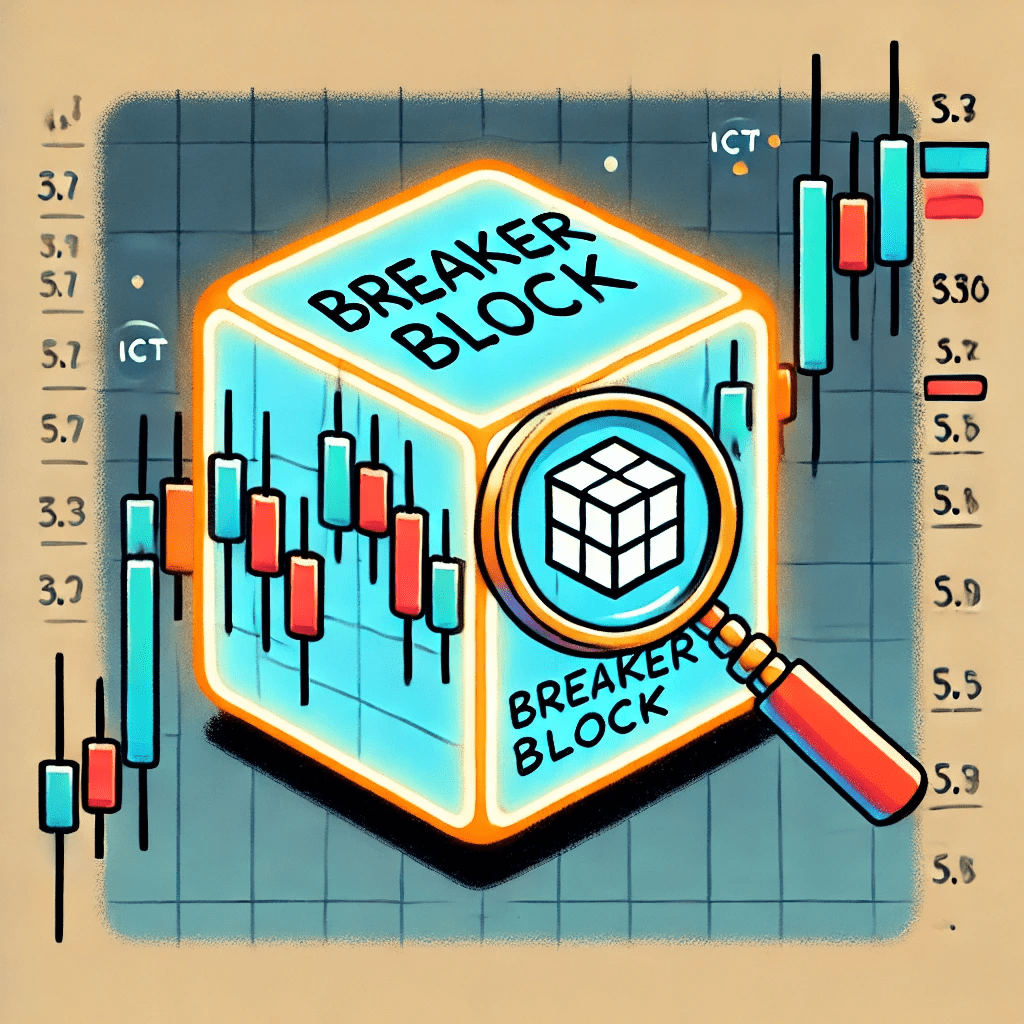ICT Breaker Block: Unlocking Smart Money Reversals in Trading
Table of Contents
Toggle
What Is an ICT Breaker Block?
An ICT Breaker Block is a key concept in Inner Circle Trader (ICT) methodology, used to identify market reversals driven by institutional traders. A breaker block forms when smart money intentionally pushes the market in one direction to gather liquidity, only to reverse in the opposite direction.
The breaker block is typically formed when a bullish or bearish move fails, resulting in a strong reversal. Recognizing this structure on a chart can help traders avoid common retail traps and align their trades with institutional order flow.
Why ICT Breaker Blocks Matter in Trading
Breaker blocks are crucial for traders who want to:
- Avoid False Breakouts: Retail traders often fall for false breakouts, only to get trapped when the market reverses.
- Align with Institutional Moves: Breaker blocks signal when institutions are shifting their positions.
- Improve Risk-to-Reward Ratios: By entering trades at breaker block levels, traders can set tighter stop-losses and maximize their profits.
Understanding breaker blocks helps traders avoid retail traps and trade in the same direction as smart money.
How to Identify a Breaker Block on a Chart
To identify an ICT Breaker Block, follow these steps:
- Look for a Failed Move
The breaker block forms when a significant bullish or bearish move fails. For example, a strong bullish move that fails to continue higher and reverses into a bearish trend. - Mark the Last Opposing Candle
Identify the last bullish candle in a bearish reversal or the last bearish candle in a bullish reversal. This candle becomes the breaker block. - Wait for Price to Return to the Breaker Block
Once the breaker block is formed, wait for price to retrace into the block. This is often a high-probability entry point. - Confirm the Reversal with Other ICT Concepts
Use order blocks, fair value gaps (FVGs), and liquidity pools to confirm the validity of the breaker block.
ICT Breaker Block vs. Order Block: What’s the Difference?
While both breaker blocks and order blocks are key ICT concepts, they serve different purposes in trading.
| Aspect | Breaker Block | Order Block |
|---|---|---|
| Formation | Forms after a failed move and reversal | Forms at areas of institutional buying or selling |
| Purpose | Indicates a shift in market direction | Shows where institutions placed significant orders |
| Entry Timing | Wait for price to retrace into the breaker block | Look for price reactions at the order block |
| Risk Level | Lower risk due to reversal confirmation | Higher risk if price doesn’t respect the order block |
In simple terms, breaker blocks confirm market reversals, while order blocks indicate potential continuation levels.
How to Trade Using ICT Breaker Blocks
Here’s a step-by-step guide to trading with breaker blocks:
- Identify Market Structure
Start by analyzing the market structure on higher timeframes to determine the overall trend. - Spot a Breaker Block Formation
Look for a failed bullish or bearish move and mark the last opposing candle as the breaker block. - Wait for Price to Retrace
Don’t enter immediately. Wait for price to return to the breaker block level before taking a position. - Combine with Other ICT Concepts
Use liquidity pools, fair value gaps, and killzones to confirm your entry. - Set Your Stop-Loss and Take-Profit
- Stop-loss: Place your stop-loss beyond the breaker block.
- Take-profit: Target the next liquidity pool or key level.
By following these steps, you can improve your accuracy and reduce your risk when trading with breaker blocks.
Common Mistakes When Using Breaker Blocks
- Entering Too Early
Many traders rush to enter trades as soon as a breaker block forms. Patience is key—wait for a retracement before entering. - Ignoring Market Structure
Breaker blocks are more reliable when they align with the overall market structure. Don’t trade against the trend. - Overlooking Confirmation
Always use additional ICT concepts like fair value gaps and liquidity pools to confirm your trades. - Not Using Proper Risk Management
Breaker blocks are high-probability setups, but no trade is guaranteed. Always use stop-losses and calculate your risk before entering.
Conclusion: Why ICT Breaker Blocks Are Essential for Smart Money Traders
The ICT Breaker Block is a powerful tool for traders who want to avoid retail traps and trade alongside institutional order flow. By understanding how breaker blocks form and how to trade them, you can significantly improve your trading accuracy.
Incorporating breaker blocks into your Smart Money Concepts (SMC) strategy allows you to spot high-probability reversal points and avoid getting caught in false breakouts. With practice and proper risk management, breaker blocks can become an essential part of your trading toolkit.
Private Coaching
If you’re ready to take your trading skills to the next level and really want to answer the question “is ICT worth it”, book your free discovery session with me today! We’ll discuss your goals, assess your current trading strategy, and create a personalized plan to align you with the edge of trading like smart money.
